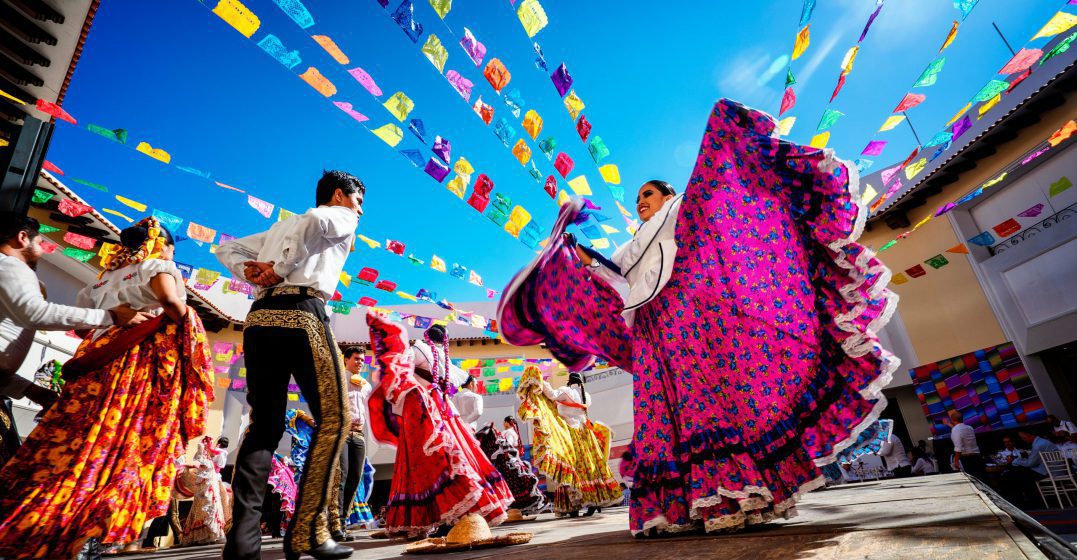Updated on January 9, 2024

A practical guide to Mexican culture and traditions

Tacos, the beach, fiestas? What else do you know about Mexican traditions and culture? Language learning is also about learning culture. Singing “the birthday song” at a birthday? Nope. Grabbing a snack from the ofrenda? No manches! (No way!) Let’s get into some Mexican culture. With this practical guide, you’ll navigate your way through a party and all the major holidays like a pro.
Mexican people are hardworking, but when the week is over, they love a good party with friends and family. Here are some general tips for Mexican culture at parties.
For a children’s birthday party, there will be a piñata (say /pin YA ta/). It’s a decorated box filled with candy and/or toys. The children will take turns bashing it open with a stick and rush to get the candy when it opens. Stand back! Learn these two important traditional Mexican songs:
One of the most fabulous Mexican traditions is the quinceñera (say /kin se an YE ra/). It is the fifteenth birthday party celebrating a girl’s transition into adulthood. It can be bigger than a wedding. The traditional Mexican dress for the birthday girl is a huge ball gown. This party will go all night, so be prepared. Music is chosen by the birthday girl and will vary greatly, but Selena songs are good to know. My favorites are Bidi bidi bom bom and Baila Esta Cumbia.
Mexican wedding traditions are similar to weddings in the United States. Grooms wear tuxedos. Brides wear white. Remember, the wedding will go all night. There will be a traditional Mexican dance called baile de billete (money dance). Guests can dance with the bride or groom, but you’ll need to pay! You’re bound to hear some mariachi so learn Hermoso Cariño for starters.
Contrary to popular belief, Cinco de Mayo is not a big party tradition in Mexico. For some reason, it has become a prominent celebration in the United States. Cinco de Mayo is a holiday commemorating the Mexican army’s victory over French colonial forces in Puebla in 1862. These days Mexican children may do military-style marches around at school, but it’s not a party.
Instead, Mexican Independence Day on September 16 is a big celebration. There will be parties in the town square, shouting “viva México” (long live Mexico!), mariachis wearing traditional Mexican dress, food, fireworks, and traditional Mexican dance.
Christmas is a little different in Mexico. Mexican traditions at Christmas follow Catholic holidays and a unique style of Catholicism specific to Mexico.
This is a national holiday and a holy day in which Mexicans celebrate the appearance of the Virgin Mary, known as la Virgen de Guadalupe, to an indigenous man in Mexico in 1531. On this day, Mexicans will sing Las Mañanitas at midnight and decorate their shrines to the Virgin Mary at home. Tens of thousands of people will gather at the Basílica de Guadalupe in Mexico City.
Día de los Reyes (Kings’ Day) is the Mexican tradition for Christmas where gifts are exchanged. Some gifts may be given on Nochebuena (December 24th), but the main day for presents is January 6th. The traditional Mexican food is rosca de los reyes (kings’ cake). Inside the cake is a small baby Jesus. Find the baby Jesus and make a wish! That person who finds the baby Jesus must also buy or make tamales, cornmeal cakes steamed in the husk, on February 2nd La Fiesta de la Candelaria.
The dates October 31-November 2 are joyous days of remembrance for deceased loved ones. Visually, this is the most amazing example of Mexican culture and traditions. Each town and family celebrates in a unique way, but events include decorations and parades that can range from cheerful to somber. The holiday dates back to pre-colonial Aztec tradition. The belief is that souls travel the difficult road from the land of the living to Míctlan, the city of the dead. Mexican traditions to honor the dead are beautiful and colorful.
Mexicans love to celebrate. In the winter when it’s cool and dry in Mexico and places with big Mexican diaspora communities, there will be big weddings, quinceañeras, and birthday parties every weekend. Don’t just observe. You should join in. Make sure you learn some songs so you can sing and dance. Even Día de los Muertos is a celebration in Mexican culture. Learn more about Spanish language and Mexican culture and traditions by taking classes with Lingoda.